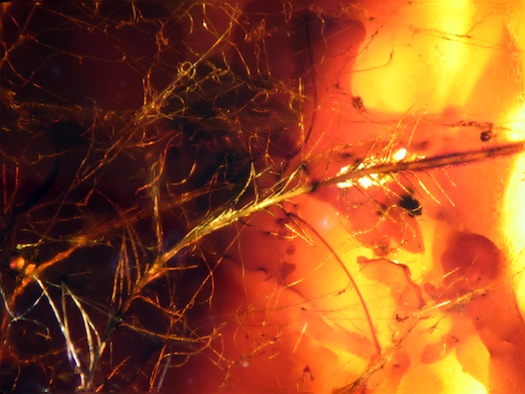A Treasure Trove of Dinosaur Protofeathers, Trapped in Amber
A cache of feathers preserved in amber, dating from around 70 to 85 million years ago, was just found in...

A cache of feathers preserved in amber, dating from around 70 to 85 million years ago, was just found in Canada, showing that border between winged dinosaurs and the earliest avians. The study indicates that these feathers, relatively modern, were already appearing even before the non-avian dinosaurs were extinct.
Click to see some amazing photos of feathers trapped in amber.
Some other tidbits: The researchers can even tell if the feathers were colored or not, due to the amount of pigment cells preserved thanks to the amber. So far as they can tell, the feathers had a range of color, from solid to mottled to transparent. It’s not immediately clear which feathers belonged to early birds and which to non-avian dinosaurs, but the level to which they’re similar to even some modern birds like the relatively ancient grebe is pretty striking.
The study can be read in full in tomorrow’s issue of Science.

Veined Feather Barb

Filaments of a Protofeather

A Modern Bird

An Ancient Equivalent

Cross-Section